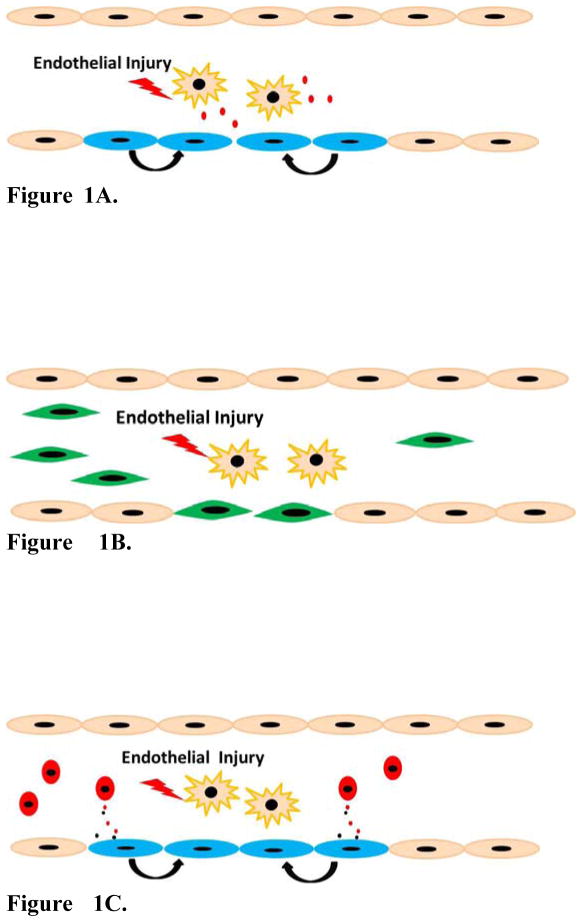Figure 1.
Figure 1A. Vascular repair by endogenous resident ECs. Vascular ECs are injured and undergo apoptosis or necrosis. The cell-cell junctions between injured ECs and resident adjacent ECs are destroyed and intercellular factors are released, which may in turn trigger the proliferation of endogenous resident ECs proliferate to replace injured ECs.
Figure 1B. Vascular repair by exogenous pluripotent stem cells (PSCs) derived ECs/EPCs. Injected exogenous EPCs derived from ESC/iPSC or directly reprogrammed fibroblasts can integrate into the blood vessel and replenish damaged vascular cells.
Figure 1C. Vascular repair by circulating EPCs. Circulating EPCs can secrete microparticles and paracrine growth factors which activate resident ECs to proliferate and regenerate the injured vasculature
 Resident vascular ECs
Resident vascular ECs
 Injured resident ECs
Injured resident ECs
 Paracrine factors released from injured ECs
Paracrine factors released from injured ECs
 Activated resident ECs
Activated resident ECs
 Exogenous ECs/EPCs derived from PSCs or directly reprogramed fibroblasts
Exogenous ECs/EPCs derived from PSCs or directly reprogramed fibroblasts
 Endogenous circulating EPCs
Endogenous circulating EPCs
 Microparticles and paracrine factors secreted by circulating EPCs
Microparticles and paracrine factors secreted by circulating EPCs

